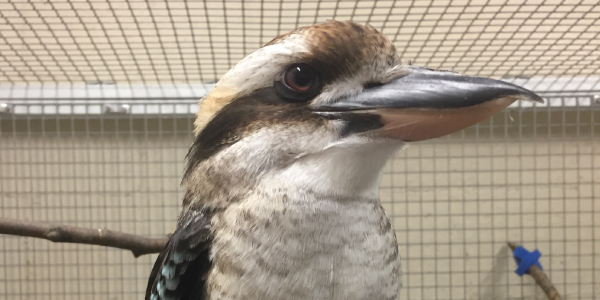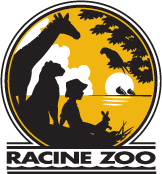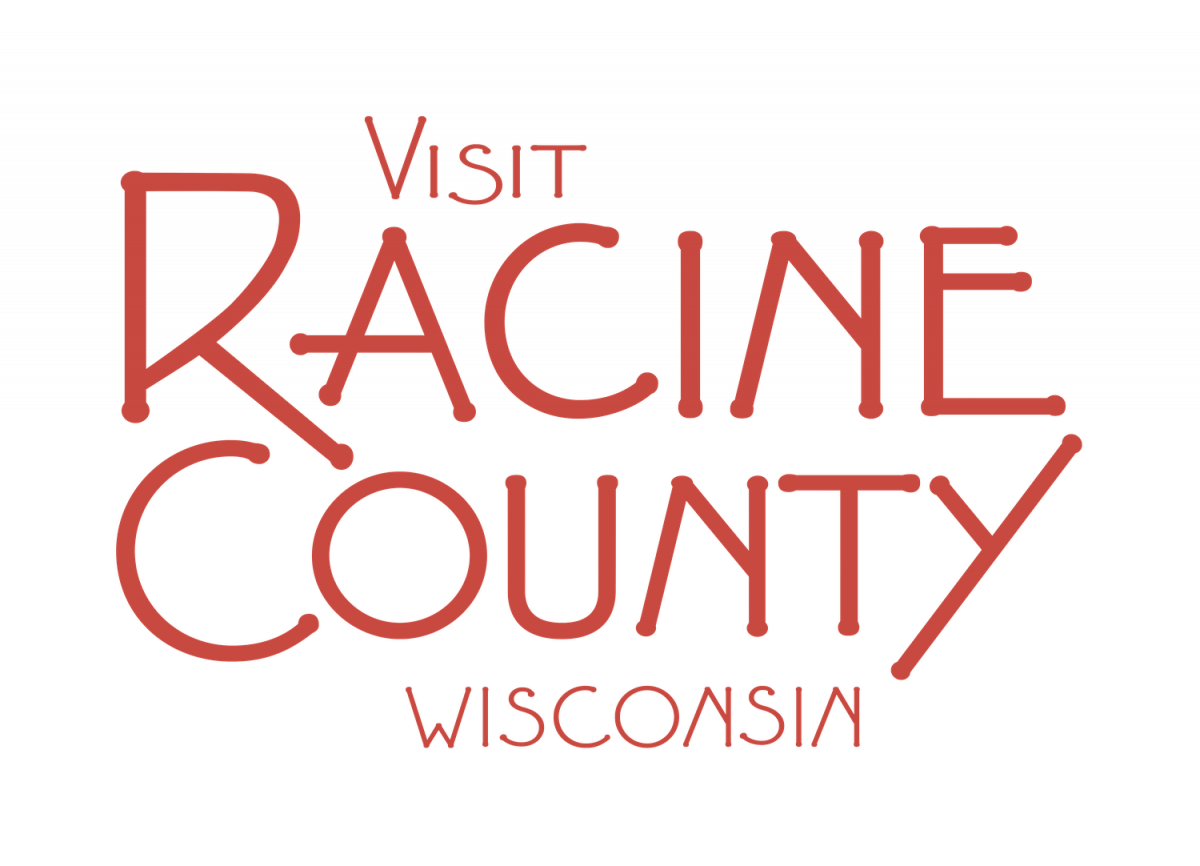
| You can meet at the Racine Zoo: |
Gumby, Male, July 30, 2011
|
| Location at the Racine Zoo: | At Education Programs |
| Scientific Name: | Dacelo novaeguinea |
| Conservation Status: | Least Concern |
| Lifespan: | 11 – 15 years in the wild; 15 – 20 years in human care |
| Adult Size: | 15 – 16 inches in length |
| Diet in the wild: | Primarily insects and invertebrates, but also snakes, lizards, rodents, and small birds. |
| Diet in the Zoo: | Mice |
| Habitat: | Woodlands and open forests |
| Range: | Eastern and southern Australia |
| Threats: | The laughing kookaburra is not considered aspecies at risk of extinction; however, they areaffected by habitat loss and destruction. |
Fun Facts:
- The laughing kookaburra is the largest species in the kingfisher family. Like others in this family, they dispatch their prey by hitting it on branches.
- Laughing kookaburras mate for life and tend toonly have one clutch per season.These birds appear to have control over the sex of their offspring.
- After young kookaburras reach independence, many stay with their parents to defend their territory boundaries and raise future clutches.These birds are highly territorial and will reuse the same nest hole year after year.
- Laughing kookaburras make six distinct calls within their family group to communicate courtship, contact, feeding, and danger. They also display their namesake “laughing” song (koo-koo-koo-koo-koo-kaa-kaa-kaa) at dawnand dusk to claim their territory. This call is often performed by multiple birds in the same family group.
- Kookaburras are common in urban and suburban areas in Australia. They often swoop in and grab food out of people’s hands suddenly.
Conservation Messages:
- Kookaburras require trees tonest, roost,perch, and hunt on. Responsible tree removal will ensure that kookaburras and our wildlife have plenty of breeding and feeding sites available. Additionally, when humans use pesticides to kill insects, they introduce deadly toxins into the ecosystem. If pesticide use is necessary, choose more natural or less harmful chemicals to help the critters that might come in contact with them unnecessarily.











